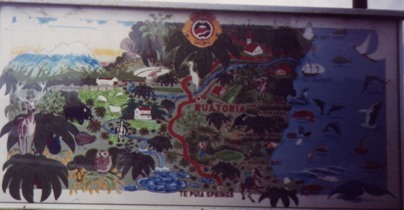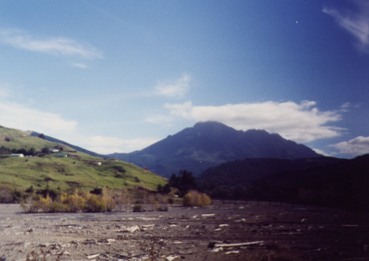Chapter 3 of Animism: Respecting the Living World engages with various aspects of Maori arts. These include performances of greeting and guest-making ceremonies, but the particular concern of the chapter is with the construction of ancestral meeting houses. These are “ancestral” not only in the sense that they derive from traditions taught by past generations, but more importantly in that they are ancestors in their own right. They have to be spoken of, to, and about as persons. They act along with local human persons, their descendents, in guest-making, in honouring the dead, and in other relational activities.
I am grateful to people in Ngati Porou (especially on the East Coast of Aotearoa New Zealand) and Ngati Ranana (especially in and around London, Britain) for their hospitality.
Again, in this site I do not propose to repeat what I have written in the book, but to offer some links and illustrations of points made there.
Click here for Ngati Ranana's website
 |
|||
| Ngati Ranana outside Hinemihi, in the grounds of Clandon House in Britain. | Hinemihi under English oaks - the annual Kohango Reo hangi. | ||
I have also been privileged to be a part of Ngati Ranana's introduction to Stonehenge, the indigenising movement of Druidry in Britain, and the planting of a tree in a Druidic grove near Bath, Somerset.
 |
|||
| Ngati Ranana and others await sunrise, summer solstice at Stonehenge, 2001 | Meeting a tree planted in honour of Ngati Ranana in a Druidic grove near Bath |
I've also been honoured to be a guest of Peter Mataira and his family, among Ngati Porou, especially in Ruatoria, on Aotearoa's East Coast.

 |
 |
||
| Mount Hikurangi was the first mountain to see the millennium sunrise - but here's a sunset instead! | Hikurangi over the river Waiapu | ||
 |
 |
||
| near the mouth of the Waiapu, a waka awaits another journey | the stern of the waka |
Once again, the point of these photos is to note that "persons" come in many shapes and sizes, comparatively few of them human.

click here to
return to the main "more ethnography"page of my animism site
click here to return to Animism
homepage
Peter and one of his daughters
